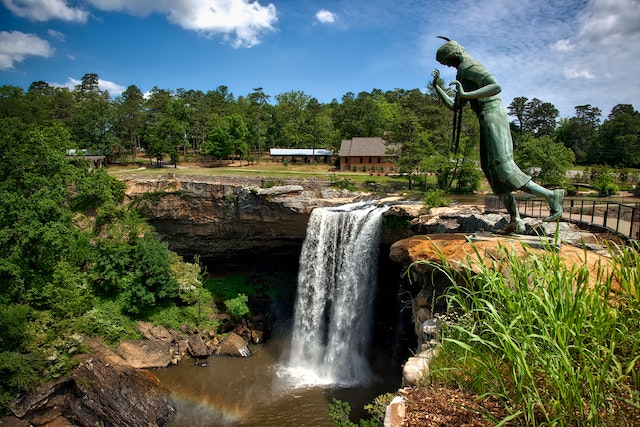The United States of America is a diverse nation that prides itself on inclusion and equality. However, the country has a dark history of genocide, forced relocation, and cultural erasure of Native Americans. Despite the growing recognition and importance of diversity, Native Americans are often overlooked, especially in issues regarding pipelines and infrastructures. In this post, we will explore why this is the case and what can be done to rectify this issue.
The History of Native Americans in the United States

To understand why Native Americans are often overlooked, we must first acknowledge the long history of oppression and mistreatment they have faced in the United States. The arrival of Europeans on the continent led to the displacement of indigenous peoples and the seizure of their lands. The forced relocation of Native Americans to reservations and boarding schools in the 19th and 20th centuries resulted in the loss of traditional cultures, languages, and ways of life. Today, Native Americans continue to face systemic inequalities, including poverty, lack of access to healthcare and education, and discrimination.
Pipelines and Infrastructure Projects
One of the ways that Native Americans are often overlooked is in the approval and construction of pipelines and infrastructure projects. In recent years, there have been several high-profile cases where pipelines have been approved despite opposition from indigenous communities. For example, the Dakota Access Pipeline, which was built in 2017, runs through sacred burial grounds and threatens the water supply of the Standing Rock Sioux Tribe. Despite protests and legal challenges, construction of the pipeline was allowed to proceed. In 2020, Washington-based U.S. District Court Judge James Boasberg found that the government had violated a law called the National Environmental Policy Act. He threw out the approval.
Similarly, the proposed Keystone XL pipeline would have crossed the traditional lands of several Native American tribes, potentially damaging cultural sites and threatening the environment. The project was eventually rejected by the Biden administration, but not before years of opposition and legal challenges.
Why Native Americans are Overlooked
There are several reasons why Native Americans are often overlooked in issues like pipelines and infrastructure. One of the main reasons is a lack of representation in government and the media. Native Americans make up just 2% of the US population and are often excluded from mainstream discussions and decision-making processes. This lack of representation makes it more difficult for indigenous communities to make their voices heard and advocate for their rights.
Another reason is the perception that Native Americans are a “vanishing” population. This stereotype perpetuates the idea that indigenous peoples are a relic of the past rather than a vibrant and diverse community with ongoing concerns and struggles. As a result, issues facing Native Americans are often seen as less urgent or important than those facing other minority groups.
There is a lack of understanding and empathy for the unique challenges facing indigenous communities. Many non-Native Americans are unaware of the history of oppression and cultural erasure that Native Americans have experienced. This lack of understanding can lead to dismissive attitudes towards issues like pipelines and infrastructure, which can have devastating effects on indigenous communities.
What Can Be Done

To rectify the issue of Native Americans being overlooked, there are several steps that can be taken. First, there needs to be greater representation of Native Americans in government and media. This can be achieved through initiatives like affirmative action, targeted outreach, and increased funding for indigenous-led media outlets.
There also needs to be greater education and awareness about the history and ongoing struggles of Native Americans. This can be achieved through initiatives like mandatory education on Native American history in schools, cultural sensitivity training for government officials and industry leaders, and increased media coverage of indigenous issues.
Lastly, there needs to be greater respect for the sovereignty of indigenous nations and communities. This means involving indigenous communities in decision-making processes that affect their lands, resources, and ways of life. It also means respecting their cultural and spiritual practices and protecting their sacred sites.
Conclusion
In conclusion, despite a growing recognition and importance of diversity, Native Americans are often overlooked, especially in issues regarding pipelines and infrastructures. This is due to a lack of representation, stereotypes, and a lack of understanding and empathy for the unique challenges facing indigenous communities. To rectify this issue, there needs to be greater representation, education, and respect for the sovereignty of indigenous nations and communities. Only by addressing these issues can we truly live up to the ideals of inclusion and equality that America claims to embrace.



















Add Comment